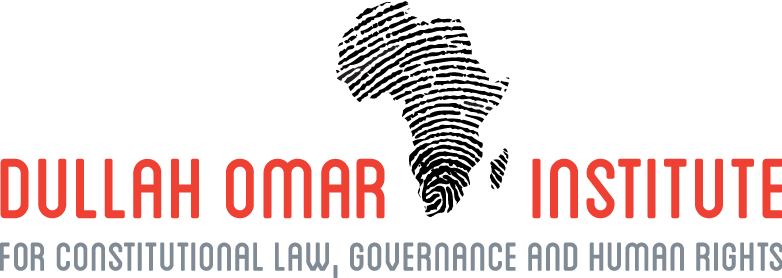Factors affecting local governance
Some of the components of good governance include a representative system of local democracy, community accountability and participation, ethical conduct, good planning processes, competent administrations, sound financial management and developmental and sustainable service delivery.
Certainly, the legislative frameworks for good governance are in place in South Africa. The Constitution is one of a few constitutions internationally with a chapter dedicated to local government powers and functions, and also clearly articulates that local government must operate as a distinct sphere, working cooperatively and developmentally with other spheres of government and the communities it serves. Approximately 40 other pieces of municipal foundational legislation provide an enabling framework for local governance.
The country has done well in creating a system of representative local democracy, in which there is not just one person one vote, but because of strict proportionality, each vote is of equal value. There continue to be more parties participating in the local elections: in 2000 some 87 parties contested elections, but only 67 received sufficient votes to be represented, compared to 2016 where some 205 parties contested elections, with 90 represented. However, in spite of this growth in political party contestation, four main parties have generally dominated election results with around 95 percent of the total votes: African National Congress (60 percent), Democratic Alliance (21 percent), Economic Freedom Fighters (9 percent), and Inkatha Freedom Party (5 percent).
The main challenges identified in LGSETA’s research is not that laws and policy frameworks are not in place, but that their implementation is often poor. Whilst some progress has been made in improving the quality of governance within the legislative frameworks, there are still too many instances where poor governance is evident and the trust of many communities has been lost.
There are a wide variety of issues which result in poor administrative and financial management. As highlighted in the National Development Plan (NDP), these include tensions in the political-administrative interface, unstable administrative leadership, skills deficits, a lack of accountability and authority, poor organisational design and low staff morale.
A review of financial governance found that while there are a high number of municipalities complying with most or all provisions, there are major challenges in financial management across municipalities in the Northern Cape, Free State, North West, Limpopo and Mpumalanga.
Various factors affect the ability of local government to provide good governance. This includes poverty, unemployment and inequality; systemic constraints facing local government; constraints due to the representation system; and significant spatial inequalities which, when coupled with significant under-implementation results in serious constraints on good governance across the country.
However, having competent officials in place who are able to do their work without political or administrative interference would also go a long way towards improving service delivery. Examining the distribution of only professional and technical staff, there is approximately 50 000 professional staff out of a complement of around 270 000 local government staff. Usually, when reports are made on the lack of competencies or capacity in municipalities, it is this group that is being referred to, including engineers, planners, financial specialists.
There is an overall engineering complement of over 14 300 persons (2 500 professionals and 11900 technicians) working in local government, with the vast majority of these (79 percent) working in the eight metropolitan areas. The remaining 21 percent are found in the 249 district and local municipalities. In terms of qualifications, an overwhelming concentration of graduate professionals work in the metros.
Another concern is that of the 674 engineers that left the employ of municipalities in 2019, some 500 left the metros. This means that each year, South African municipalities are losing almost 5 percent of all professional and technician engineers, the highest turnover rate followed by ICT (3,5 percent) and planning (3,6 percent).
LGSETA’s research report notes the need to take very seriously the geographic imbalance in, and loss of, professional skills across the country.
The recent development of a District Development Model (DDM) intends to reform the state’s architecture to ensure that at a district/metropolitan level, all spheres of government should implement their programmes in an integrated and coordinated way, ensuring implementation is synchronised and capabilities are shared. However, this will require that there is a far greater balance in the location of professional staff across the country.
Additional projects being completed at a national government level examine ways to address and clarify challenges around powers and functions to provide clear lines of responsibility for delivery of services. The report notes that challenges with the two-tier system of Category C (district municipalities) and Category B (local municipalities) still exists, not only in terms of the division of responsibility between the tiers but also in the fact that this arrangement causes delays in the implementation of projects due to poor coordination and non-consultation with local government by provinces.
South Africa’s strong decentralisation policy, and a generally good framework for intergovernmental relations, are encouraging. There is however an urgent need to build the administrative capabilities and accountability of local governance.
In conclusion, the LGSETA notes that over the past 19 years of democratic local governance, conditions for good governance have not always been met. Good governance is multidimensional, and achieving it requires the acknowledgment of the multiplicity of factors that impede and promote its achievement. A number of weaknesses in the system need to be addressed, with key recommendations focusing on the duplication of structures and functions between spheres and districts and local municipalities; misaligned or inappropriate devolution of functions; municipalities performing functions which are not their core competencies; the need to firmly address incompetence and corruption and the need for better coordination and capacitation at all levels of government.
However, on a positive note, there are encouraging initiatives underway to address many of these challenges, including the work that the Department of Cooperative Governance and Traditional Affairs (COGTA) is undertaking in reviewing legislation and proposing new roles for speakers. At the heart of it all, the LGSETA notes that across the board, there is a need for greater leadership.
This article is part of a series reporting on research commissioned by the Local Government Sector Education & Training Authority (LGSETA) (Contact: matodzir@lgseta.org.za)
The publication of the Bulletin is made possible with the support provided by the Hanns Seidel Foundation and the Bavarian State Chancellery.



